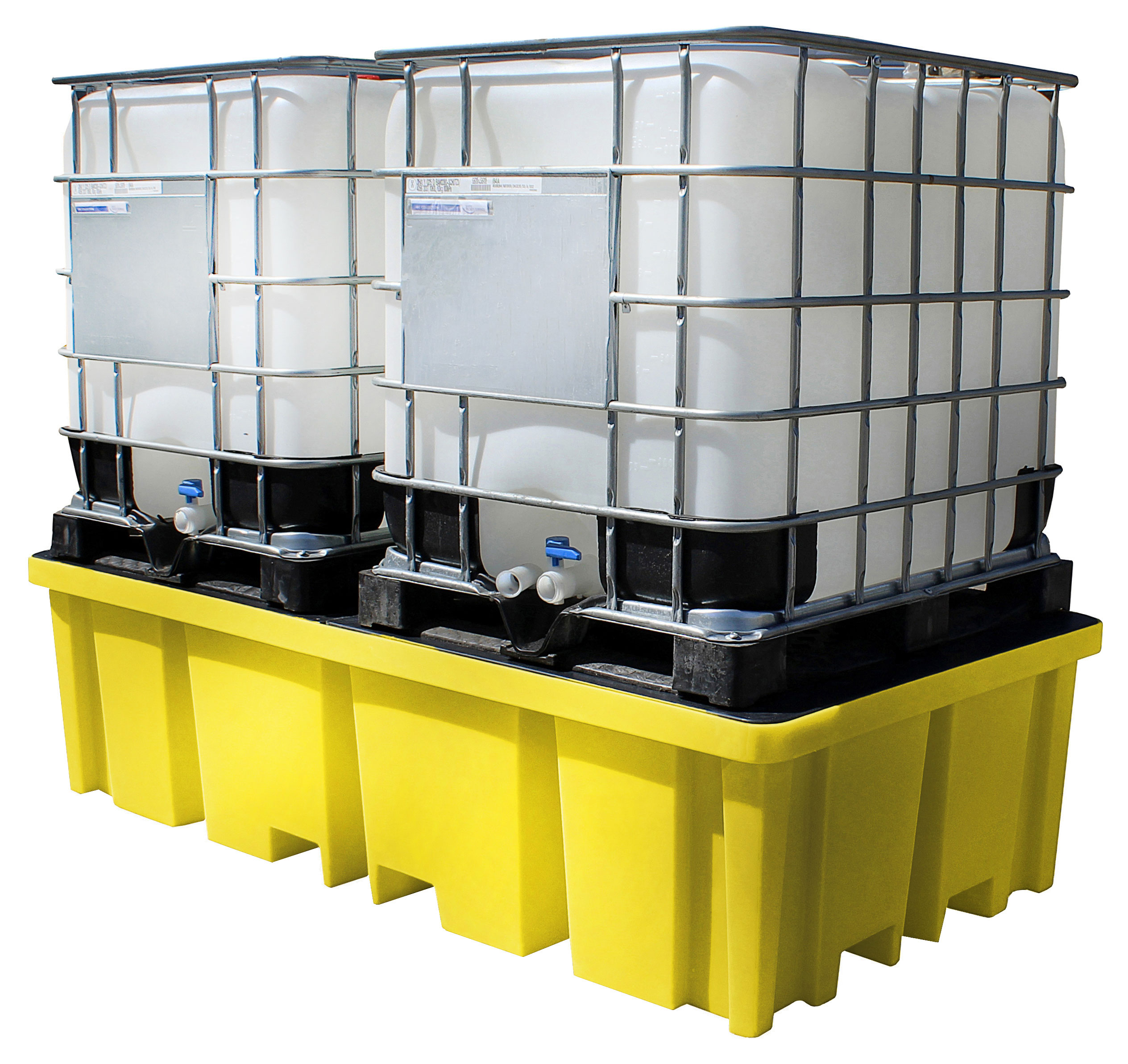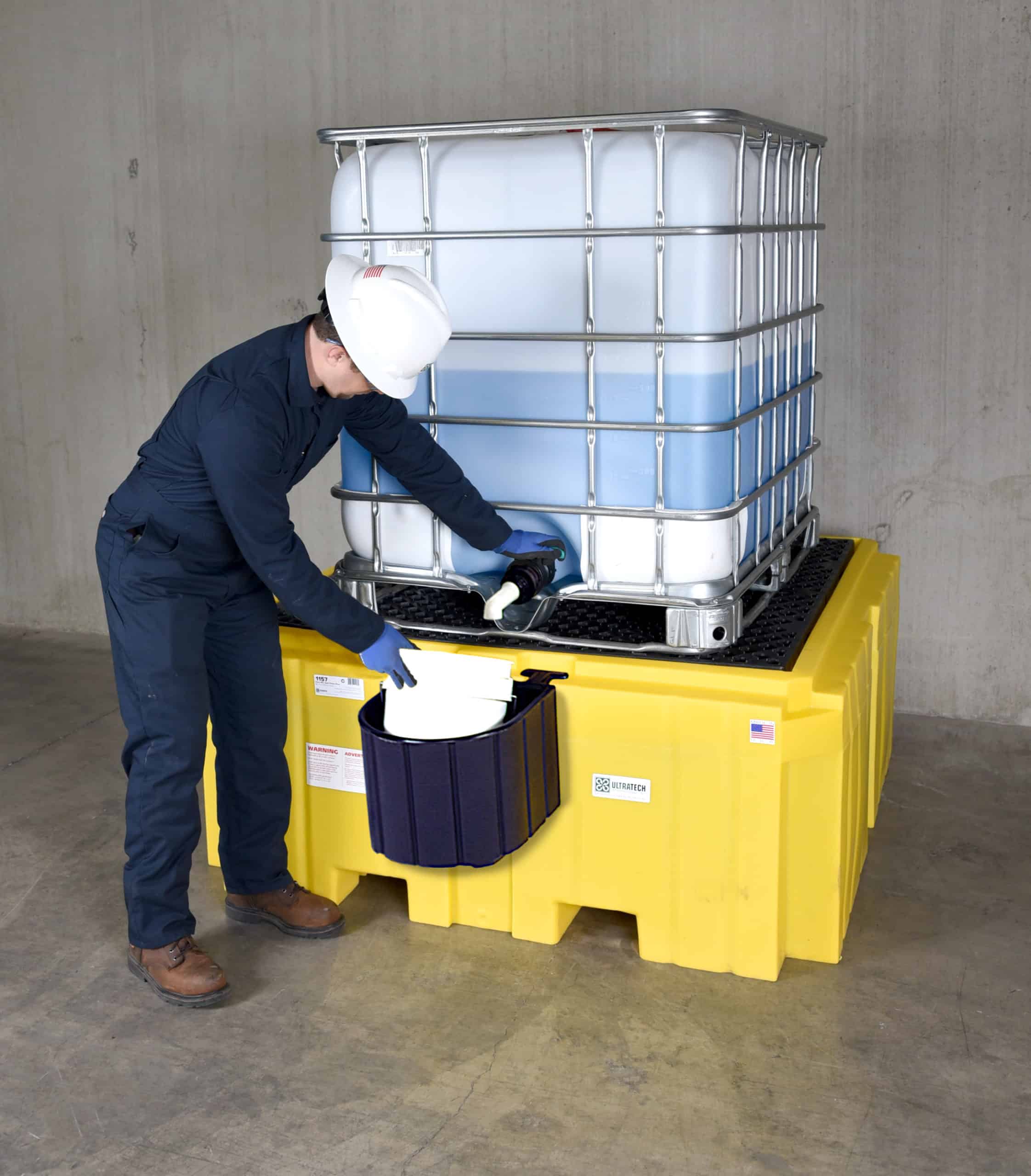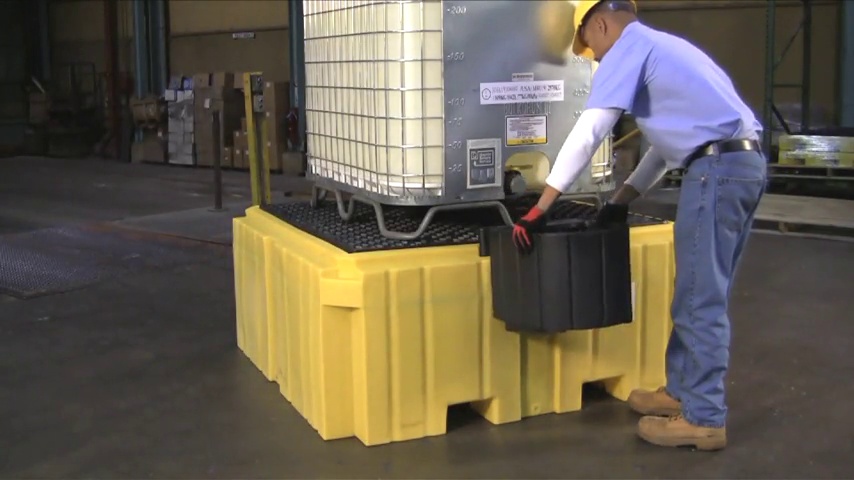IBC Spill Pallets
IBC spill pallets are specially designed containment platforms used to safely store Intermediate Bulk Containers while preventing leaks or spills from contaminating the environment. Constructed from durable, chemical-resistant materials such as polyethylene, these pallets can withstand exposure to a wide range of liquids, including water, chemicals, and fuels. They feature a built-in sump or containment area capable of holding the full volume of an IBC tank in case of leakage, ensuring compliance with environmental and safety regulations. Ideal for industrial, commercial, and agricultural settings, IBC spill pallets offer a reliable, reusable, and cost-effective solution for spill control and liquid storage safety.
Description
Introduction to IBC Spill Pallets
When it comes to safe storage and handling of intermediate bulk containers (IBCs), ensuring compliance with environmental safety regulations is crucial. An IBC spill pallet provides an effective secondary containment solution designed to prevent hazardous leaks, chemical spills, and environmental contamination. Built with durability and efficiency in mind, these pallets are widely used across industries such as manufacturing, chemical processing, pharmaceuticals, food and beverage, and logistics.
Why Choose an IBC Spill Pallet?
Spillage from IBC tanks can lead to significant environmental, financial, and health risks. A well-designed IBC spill pallet ensures:
-
Compliance with EU regulations (Directive 2008/98/EC on waste and EN ISO standards).
-
Containment of accidental leaks, reducing the risk of soil and water contamination.
-
Worker safety by minimizing slip and fall hazards.
-
Cost savings by preventing product loss and cleanup expenses.
Whether you are storing hazardous chemicals, oils, or water-based solutions, a spill pallet is a critical piece of safety equipment for any workplace.
Key Features of IBC Spill Pallets
Modern IBC spill pallets are engineered to deliver maximum safety and usability. Some of the main features include:
-
High load capacity – designed to support one or two IBC tanks, depending on the model.
-
Chemical resistance – constructed from durable polyethylene (PE) or galvanized steel.
-
Removable grates – for easy cleaning and maintenance.
-
Forklift pockets – allowing quick and safe transportation across work sites.
-
Weather resistance – suitable for both indoor and outdoor use.
Benefits of Using IBC Spill Pallets
-
Environmental Protection: Prevents harmful liquids from contaminating soil and groundwater.
-
Worker Health and Safety: Reduces exposure to hazardous spills.
-
Compliance Assurance: Meets European safety standards for spill control.
-
Durability: Resistant to corrosion, rust, and chemical damage.
-
Cost-Effective: Saves money on fines, product waste, and cleanup operations.
Applications of IBC Spill Pallets
An IBC spill pallet is versatile and can be applied across multiple sectors:
-
Chemical Industry – storage of corrosive substances.
-
Food & Beverage – containment of liquid ingredients.
-
Pharmaceuticals – handling sensitive or hazardous materials.
-
Agriculture – safe storage of pesticides and fertilizers.
-
Manufacturing Plants – spill prevention in bulk liquid storage.
Statistical Characteristics of IBC Spill Pallets
To give you a clearer picture of the efficiency and performance of modern spill pallets, here are some recent technical and market statistics:
| Feature / Statistic | Average Value (2024 EU Market) | Notes |
|---|---|---|
| Load Capacity | 1,200 – 2,500 kg | Depending on model (single or double IBC) |
| Sump Capacity | 1,100 – 1,250 liters | Meets EU safety containment standards |
| Material | 85% Polyethylene, 15% Steel | Polyethylene for chemical resistance |
| Average Price Range | €450 – €950 | Varies by brand, size, and material |
| Market Growth | CAGR 5.2% (2023–2028) | Rising demand in EU safety compliance |
| Common Lifespan | 10–15 years | With proper maintenance |
These statistics show that IBC spill pallets are not only reliable but also a long-term investment for businesses across Europe.
How to Select the Right IBC Spill Pallet
When choosing the right model for your business, consider the following factors:
-
Number of IBCs: Decide whether you need a single or double containment unit.
-
Material Type: Polyethylene for chemical resistance, steel for fire resistance.
-
Sump Capacity: Ensure compliance with your local regulations.
-
Mobility Requirements: Forklift pockets and removable grids can enhance efficiency.
-
Outdoor vs Indoor Use: Weather-resistant units are essential for outdoor environments.
Maintenance and Safety Tips
To maximize the lifespan and effectiveness of your IBC spill pallet, follow these guidelines:
-
Inspect pallets regularly for cracks or damages.
-
Clean the sump after every spill.
-
Do not exceed load capacity.
-
Store only compatible chemicals to prevent material degradation.
-
Ensure proper training for workers handling IBCs.
Conclusion
An IBC spill pallet is not just a compliance requirement—it is a smart investment in environmental safety, workplace protection, and long-term cost efficiency. With European industries increasingly focusing on sustainability and risk reduction, the use of spill pallets is expected to grow significantly in the coming years.
Whether you operate a small warehouse or a large industrial facility, choosing a high-quality IBC spill pallet ensures that your business remains compliant, sustainable, and safe.




Reviews
There are no reviews yet.